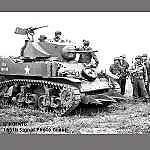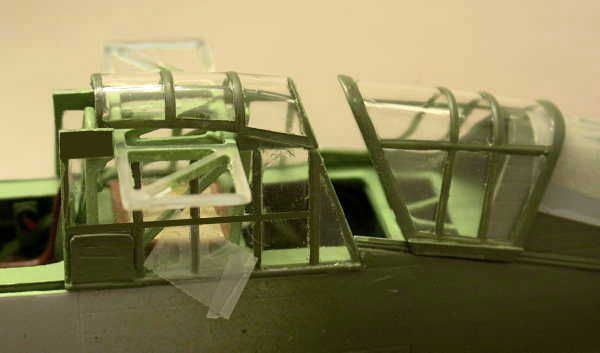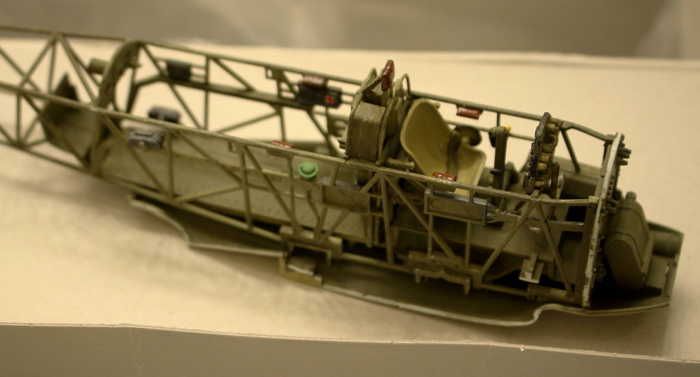Advice requested on the Matchbox 1/32Lysander

#521
Kentucky, United States
Joined: April 13, 2011
KitMaker: 9,465 posts
AeroScale: 375 posts
Posted: Monday, January 22, 2018 - 06:48 AM UTC
Some notes about modifications needed for these side glass canopy pieces:
. . . . . . .

#1. A small chunk of plastic needs to be added to this top front tab. First of all, this closes the remaining open space between the canopy window and the wing spar. However more importantly, it gives you a front attachment point for the arched canopy roof. Otherwise the ONLY support for this arched roof is where it glues to the rear corners of the flat canopy sides. If you recall this arched glass must also support the moving portion of the canopy that is directly over the pilot's head.
#2. Lower left window pane; (PORT side of aircraft ONLY) This square should be opaque. This is actually the cover plate for the fuel filler port. The fuel filler pipe connects this port to the main gas tank and can be seen in a number of reference photos elsewhere on this thread.**
#3. Center horizontal window divider should be located here; Both Matchbox and MonteX have left out this detail. I simply cut out a section of each MonteX mask piece to create this crossbar. (I should have glued a small plastic bar at each divider - just a painted line does not give enough detail relief.)
** If the aircraft is equipped with the auxiliary fuel tank the tank has it's own feeder line to the carburetor and also has it's own filler pipe which goes straight up thru the canopy arch. (You have to fill both tanks separately to completely fill the aircraft with fuel.)
#521
Kentucky, United States
Joined: April 13, 2011
KitMaker: 9,465 posts
AeroScale: 375 posts
Posted: Monday, January 22, 2018 - 07:54 AM UTC
Fuel Filler Cover: . . . . . . . . . . . . . . . . . . . . . . Main Tank Fuel Filler Pipe:
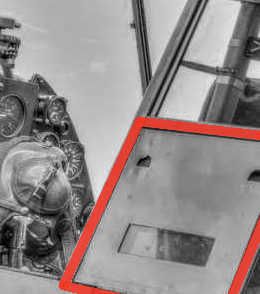
. . .
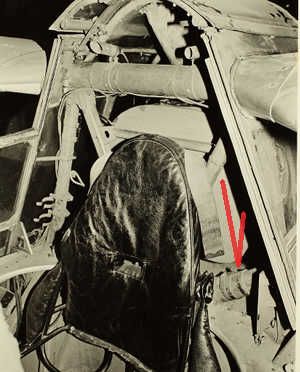

#521
Kentucky, United States
Joined: April 13, 2011
KitMaker: 9,465 posts
AeroScale: 375 posts
Posted: Monday, January 22, 2018 - 07:56 AM UTC
The Canopy Arch and the fuel filler door:
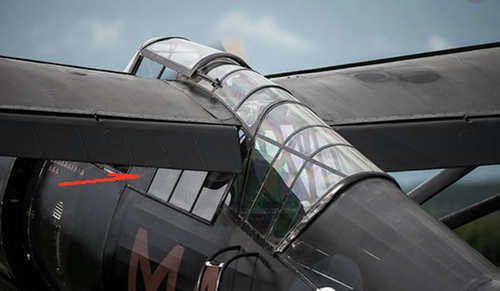

#521
Kentucky, United States
Joined: April 13, 2011
KitMaker: 9,465 posts
AeroScale: 375 posts
Posted: Monday, January 22, 2018 - 08:02 AM UTC
A Correction:Only SOME Lysander canopy have that horizontal window divider, others did not. So building it either way is correct.
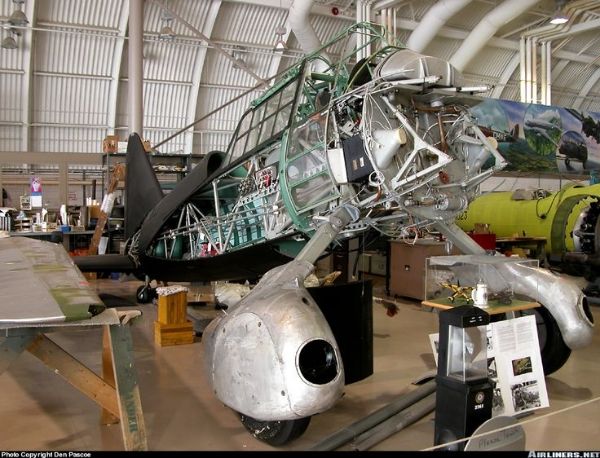 Photo copyright Dan Pascoe / Airliners.net - used here for historical research and discussion only.
Photo copyright Dan Pascoe / Airliners.net - used here for historical research and discussion only.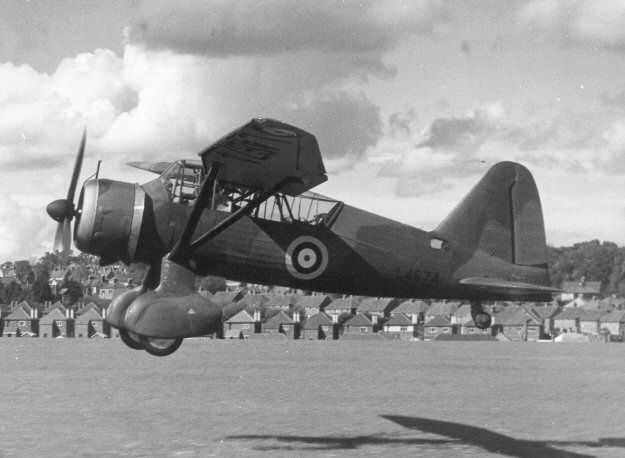

#521
Kentucky, United States
Joined: April 13, 2011
KitMaker: 9,465 posts
AeroScale: 375 posts
Posted: Monday, January 22, 2018 - 09:02 AM UTC

#521
Kentucky, United States
Joined: April 13, 2011
KitMaker: 9,465 posts
AeroScale: 375 posts
Posted: Friday, January 26, 2018 - 10:58 AM UTC
OK, once again I ask the question "bar stool or tractor seat for the gunner?"



#521
Kentucky, United States
Joined: April 13, 2011
KitMaker: 9,465 posts
AeroScale: 375 posts
Posted: Friday, January 26, 2018 - 11:01 AM UTC
Go'n with the Tractor Seat!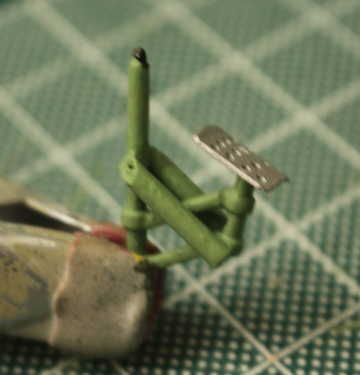

The big cylinders represent springs. I have never seen a cantilevered swivel seat that did not counter balance using big springs with an adjustable control knob of some kind that sets the spring tension. This to off-set the varied weights of different gunners. This device is similar to the double springs on an architect's drawing board lamp. As a gunner this fellow needs to be loose to quickly move around
(as loose as Han Solo or Luke in the gunner's seat of the Millennium Falcon.) 
Still waiting for those twin Brownings to arrive to give the Gunner something to do.
Early on in this build I made a boo boo. I put the gas tank in backwards. The curved side is supposed to face forward and tuck in just a bit under the pilot's seat. This means the tank now protrudes too far to the rear. To compansate I had to angle the gunner's seat post (slanting to the rear rather than perfectly vertical as it should be.) in order to clear the tank. So if anyone else follows this build, be forewarned.I should have built a scratch gas tank instead. I don't think the Matchbox offering looks anything like the real deal.

#521
Kentucky, United States
Joined: April 13, 2011
KitMaker: 9,465 posts
AeroScale: 375 posts
Posted: Friday, January 26, 2018 - 04:19 PM UTC
I will be adding the padded back rest to the gunner's chair. Don't want to pass up the chance for more detail and another color in this area.

#521
Kentucky, United States
Joined: April 13, 2011
KitMaker: 9,465 posts
AeroScale: 375 posts
Posted: Monday, January 29, 2018 - 09:47 PM UTC
A rookie question:
Fire Extinguishers both British and US - if they were inside a vehicle were they painted red?
Also what color were the oxygen bottles in British aircraft? How 'bout in US aircraft.
I think US aircraft had either pale green or yellow oxygen bottles but what about in British planes?
California, United States
Joined: January 22, 2016
KitMaker: 766 posts
AeroScale: 103 posts
Posted: Tuesday, January 30, 2018 - 05:04 AM UTC
It would be my understanding of the times that shoulder belts probably weren't used, just lap belts.
I could be wrong.
Just completed-
1/24th Tamiya Porsche 956 Skoal Bandit
In the works:
1/12th Protar Ferrari 312T2 (shelved for time being)
ERTL D-8 Caterpillar Bulldozer

#521
Kentucky, United States
Joined: April 13, 2011
KitMaker: 9,465 posts
AeroScale: 375 posts
Posted: Tuesday, January 30, 2018 - 11:01 AM UTC
Patrick I believe you are absolutely correct. However I did not think of that earlier and since I had already installed them in my Lizzie, (and they look GOOD!)
They're stay'n.

#521
Kentucky, United States
Joined: April 13, 2011
KitMaker: 9,465 posts
AeroScale: 375 posts
Posted: Friday, February 02, 2018 - 09:40 AM UTC
Despite Patrick's very correct comment - I had already installed the Eduard shoulder harness into the Lysander. It looked so good I did not have the heart to rip it out again. Here is the result: So - they stay!
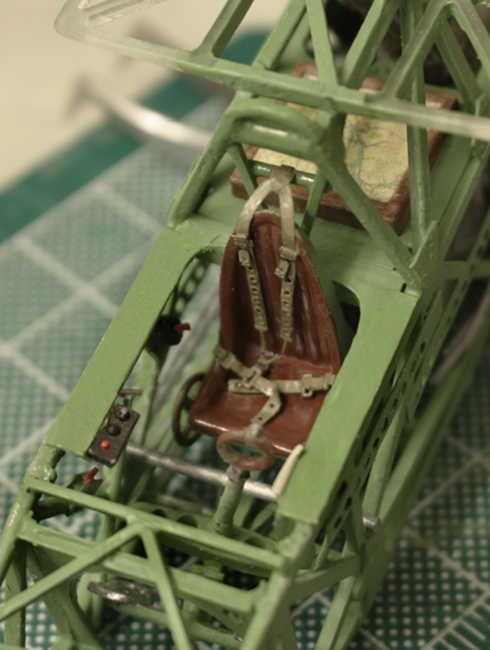
I think they look so good I just cannot resist!
AND the pilot figure still fits into the seat with his harness and chute pack!

#305
Christchurch, New Zealand
Joined: February 01, 2006
KitMaker: 1,673 posts
AeroScale: 1,517 posts
Posted: Friday, February 02, 2018 - 10:05 AM UTC
Who's to say they weren't retro-fitted?

#521
Kentucky, United States
Joined: April 13, 2011
KitMaker: 9,465 posts
AeroScale: 375 posts
Posted: Friday, February 02, 2018 - 07:14 PM UTC
I would think that by the late war any Lizzies still flying would be updated.

#521
Kentucky, United States
Joined: April 13, 2011
KitMaker: 9,465 posts
AeroScale: 375 posts
Posted: Friday, February 02, 2018 - 07:16 PM UTC
The Brownings have arrived from Gas Patch!(And I got FOUR when I only expected two!)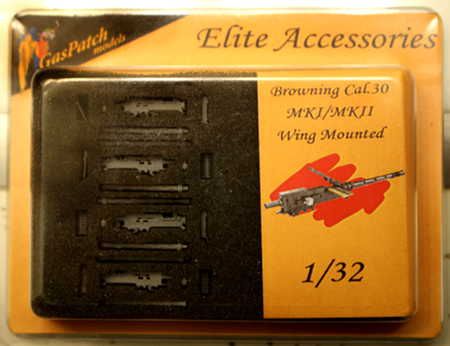
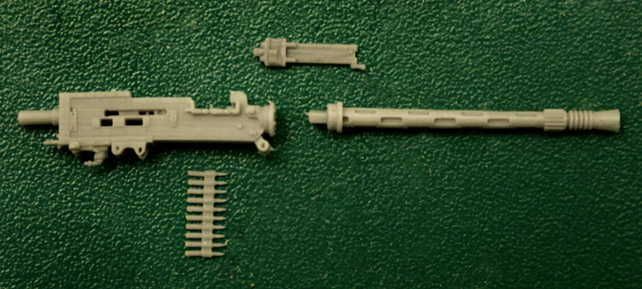
They arrived very safely and attractively packaged!

#521
Kentucky, United States
Joined: April 13, 2011
KitMaker: 9,465 posts
AeroScale: 375 posts
Posted: Friday, February 02, 2018 - 07:41 PM UTC

#521
Kentucky, United States
Joined: April 13, 2011
KitMaker: 9,465 posts
AeroScale: 375 posts
Posted: Friday, February 02, 2018 - 07:45 PM UTC
Also I am up to my old Lysander acquired tricks in adding the internal ribs that support the aircraft's cloth skin. It is an easy way, I feel, to add more complexity of detail that will be visible down thru the cockpit openings.

Discovered just tonight that HpH has come out with a resin Arado in 1/32nd scale and they included the cloth ribs on the interior of their fuselage. Makes me feel like I am on the right track when I find a major manufacture making the same detailing choices as myself.

#192
Kentucky, United States
Joined: November 25, 2009
KitMaker: 1,383 posts
AeroScale: 65 posts
Posted: Friday, February 02, 2018 - 08:32 PM UTC
Excellent work Mike! I have seen the one in Canada years ago, but your model shows details I certainly missed. Thank you for sharing. Looking forward to seeing more of your efforts!

Joel_W
 Associate Editor
Associate EditorNew York, United States
Joined: December 04, 2010
KitMaker: 11,666 posts
AeroScale: 7,410 posts
Posted: Friday, February 02, 2018 - 10:20 PM UTC
Mike,
I just finished reading through your entire build to date. A most impressive build for sure. Your research, willingness to modify, and add detail as needed has resulted in a one of Lysander that's steps ahead of any build I've seen to date.
And thanks for sharing the multitude of reference pictures that just might be useful to WW11 modelers like myself down the road.
I can't answer your question about the color of British Oxygen bottles and fire extinguishers, but the USA aircraft at the beginning of the war used Yellow for Oxygen bottles that was carried through till the end as far as I can tell. Fire extinguishers started off as unpainted bottles with the handles paint red. At some point the bottles were painted. I've seen examples painted in Gloss Red, Gloss Green, & Silver. Honestly, I have no definitive answer. this is another question that I'd defer to Dana Bell.
Joel
On my Workbench:
Monogram 1/24 scale 427 Shelby Cobra
Just Completed:
Beemax 1/24 scale BMW M3 E30 1992 Evolution II
Stockholm, Sweden
Joined: May 02, 2006
KitMaker: 1,953 posts
AeroScale: 1,902 posts
Posted: Saturday, February 03, 2018 - 02:02 AM UTC
Michael! I am so happy that I finally can offer what you asked for when you started this thread: advice

!
Don't worry about the seatbelts, they are most likely correct the way they are. A friend of mine wrote
a small essay on the subject of the sutton harness some years ago. "
In the 1930s, the four-point Sutton harness was a broadly established standard in all RAF aircraft types, from de Havilland DH 82 Tiger Moth and Miles Magister to the Spitfire and Hurricane."
Keep up the good work!

Magnus
Press banner to the right to follow my trail to the new forums!

#521
Kentucky, United States
Joined: April 13, 2011
KitMaker: 9,465 posts
AeroScale: 375 posts
Posted: Saturday, February 03, 2018 - 11:57 AM UTC
Thanks guys for the positive support.
Joel on the fire extinguishers I get the impression that before the aerosol type extinguishers came out we were just talking about the old fashioned, all brass soda water type Pyrene extingusher. The red handle you had to manually pump. One pump, one little spit of water at a time.

But I know British tanks had some sort of small pressurized extinguisher and I just thought the English planes would use the same.

#521
Kentucky, United States
Joined: April 13, 2011
KitMaker: 9,465 posts
AeroScale: 375 posts
Posted: Saturday, February 03, 2018 - 12:40 PM UTC
Magnus I am very surprised they were using the four point harness that early! Live and learn.
Joel_W
 Associate Editor
Associate EditorNew York, United States
Joined: December 04, 2010
KitMaker: 11,666 posts
AeroScale: 7,410 posts
Posted: Sunday, February 04, 2018 - 08:16 PM UTC
Michael,
Yep, that's what I've understood they used, and that they weren't painted during that time frame.
Joel
On my Workbench:
Monogram 1/24 scale 427 Shelby Cobra
Just Completed:
Beemax 1/24 scale BMW M3 E30 1992 Evolution II

#521
Kentucky, United States
Joined: April 13, 2011
KitMaker: 9,465 posts
AeroScale: 375 posts
Posted: Saturday, February 10, 2018 - 02:28 AM UTC

Anyone know what the four pipes at the top of the engine cowl might be? I know they are later additions. Perhaps they are after market additional ram air intakes for the carburetor. I know what the two pipes lower down are; one on each side of the cowl feed air to the engine oil coolers.

#521
Kentucky, United States
Joined: April 13, 2011
KitMaker: 9,465 posts
AeroScale: 375 posts
Posted: Saturday, February 10, 2018 - 02:32 AM UTC





